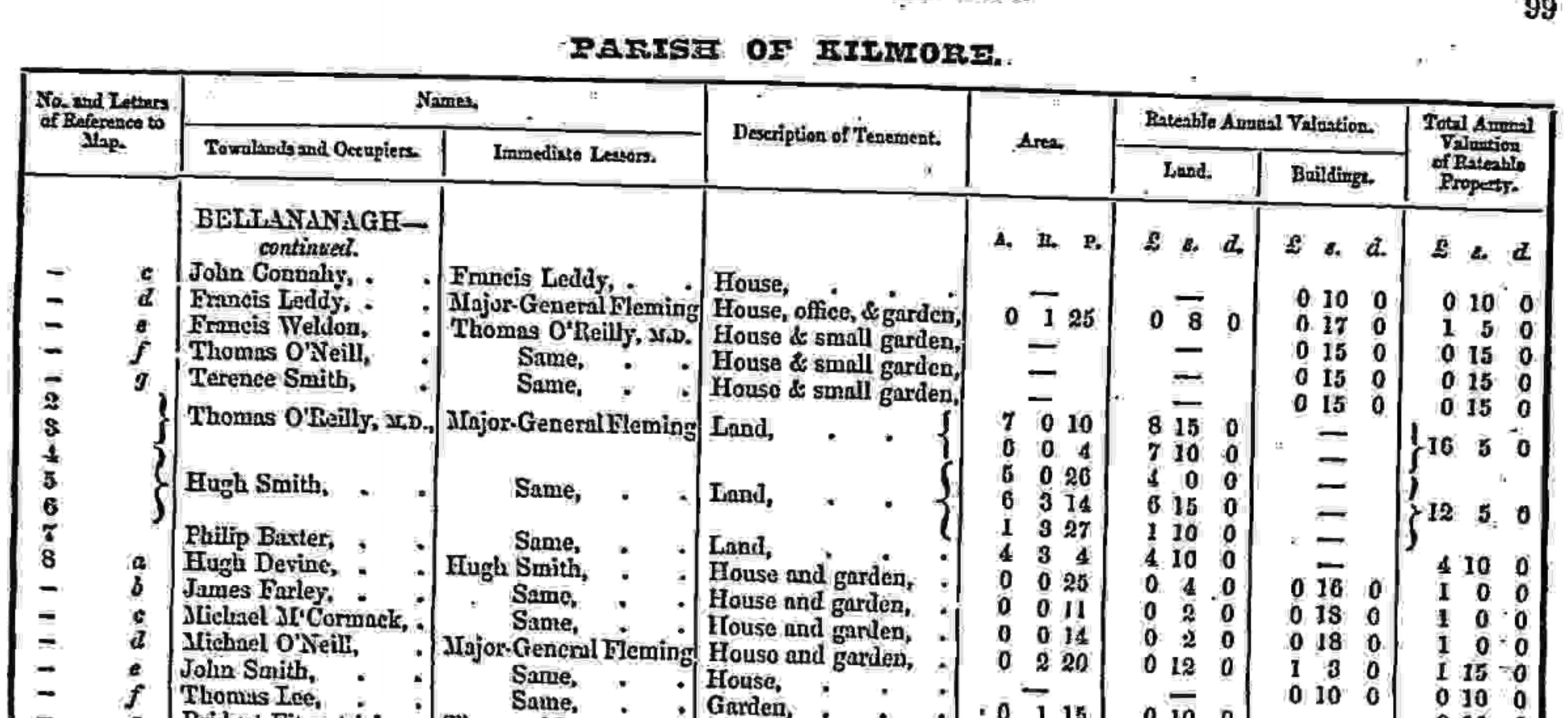Sign up for the Family Tree Newsletter! Plus, you’ll receive our 10 Essential Genealogy Research Forms PDF as a special thank you.
Get Your Free Genealogy Forms
"*" indicates required fields
One of the most important resources for 19th-century Irish genealogy is Griffith’s Valuation, a property tax survey carried out between 1848 and 1864. Also known as the Primary Valuation of Ireland, it’s a partial substitute for the loss of most 1800s Irish census records.
Griffith’s Valuation lists only those who owned or leased land, so it’s like a head-of-household census. But it covers about 80 percent of the population and every parish, including more than 1 million dwellings.
You can access Griffith’s Valuation for free on the website Ask About Ireland, a cooperative effort among public libraries, local museums and archives to digitize Irish cultural resources.
Follow these six steps to find your Irish ancestral roots in its pages:
1. Enter a Family Name
From the home page, scroll down and click Griffith’s Valuation. (Or visit the website directly.) Enter a last name in the Family Name box and click the Search button.
The results will give you a sense of the name’s geographic distribution. For uncommon names, you might identify a locality to focus your research. For example, a search for McMorris reveals 36 matches, including several in the parish of Donaghedy in County Tyrone.
Try different spellings and forms of the same name, with and without the prefix Mc, Mac or O’ (with and without the apostrophe): O’Donnell, Donnell, Donald, McDonald and MacDonald.
Check the Include Similar Names box to find matches on names that contain your query—for example, Donnell, O’Donnell, McDonnell and Donnelly with a search for Donnel.
2. Narrow Results Using a Place or First Name
A search on the family name Brennan produces 6,700 matches, but you get only five hits when you add the first name Ambrose. Similarly, you’ll get 1,256 matches on the last name Grant, but only 30 in King’s County (Offaly).
Bernard “Barney” Clark, an Irish immigrant who settled in Minnesota, placed an ad in the Boston Pilot in 1867. He was trying to find his siblings “Bridget and James Clark, from the town of Belinaa, parish of Killmore, county Cavan.”
A search on the last name Clark, with the box checked to Include Similar Names, produces 7,800 matches—mostly spelled Clarke. Specify County Cavan and the parish of Kilmore, and you get 11 matches.
3. See Details
Click a link in the Details column to view more information, including the townland. (An Irish parish might contain 25 to 30 townlands.)
The first four occupiers, two Bernards and two Michaels, all lived in the townland of Bellananagh. The Bernard Clark mentioned in the previous step emigrated before Griffith’s Valuation was published, in 1857 for this part of County Cavan, but these four Clarkes were surely close relatives.
4. View the Original Image
Back on the results page, click an icon in the Original Page column. You can right-click (on a Mac, control-click) to zoom in or print the image.
The first occupier in the town of Bellananagh is Bernard Clarke (not pictured), who lived on Granard Road. The Immediate Lessors column shows that he leased the property from Major-General Fleming.
The next column, Description of Tenement, says, “House, offices and yard.” The term ‘office’ was used to describe a farm building such as a stable or a cow barn. If no house is mentioned, the occupier lived somewhere else.
The area, if indicated, is given in acres, roods and perches. There are 40 square perches to a rood, and four roods to an acre.
The next two columns show the Rateable Annual Valuation of land and buildings. The total in the last column—4 pounds 10 shillings—indicates the income Bernard Clarke’s property could be expected to produce in a year. That figure was used as the basis for local taxation.
5. Place It on the Map
Click the map icons to see a map as a pop-up or in a new window. (It’s easier to navigate around the map in a new window.)
The website lays an historical Ordnance Survey map over a modern interactive map. You can zoom in or out, and use the slider to alternate between historical and modern.
6. Add Towns
View a town plan by clicking Show Towns, then the house icon. Zoom in to see street numbers.
Return to the Griffith’s Valuation page image (no. 4). The first column refers to the number that you’ll see on the map. Bernard Clarke lived at 23 Granard Road, along with other residents numbered from 1 to 16.
Congratulations! You’ve now pinpointed an ancestor’s home with Griffith’s Valuation.
Related Reads
A version of this article appeared in the March/April 2013 issue of Family Tree Magazine. Last updated: December 2024.














